by Nadia Egan // June 4, 2024
This article is part of our feature topic Habitat.
Living in big cities, we’re constantly surrounded by large buildings, whether residential, industrial, institutional or otherwise. Yet, despite this close proximity, we can probably count on one hand the number of times we really slow down to admire the scale of these structures. The same cannot be said for Vienna- and Berlin-based artist Zara Pfeifer, whose photographic career, which grew out of her architecture studies at the Academy of Fine Arts Vienna, has centered primarily around the phenomena of large-scale infrastructure, notably its social aspect. After coming across Pfeifer’s work a few years ago on Instagram, I was instantly drawn to her capacity to truly capture a building’s magnitude. Curious to find out more about how she worked and her connection to the sites she chose to document, I got in touch with her to discuss her projects ‘Du, meine konkrete Utopie’ (2013-17)—a study of the income-restricted residential complex Alt-Erlaa, designed by Austrian architect Harry Glück in the late 1970s and sitting on the outskirts of Vienna—and ‘Good Street!’ (2018-22)—a documentation of truck drivers’ daily life as they travel through Europe. In our conversation, we also touched on the broader influence architecture can have on its inhabitants and the ways this can vary from location to location.
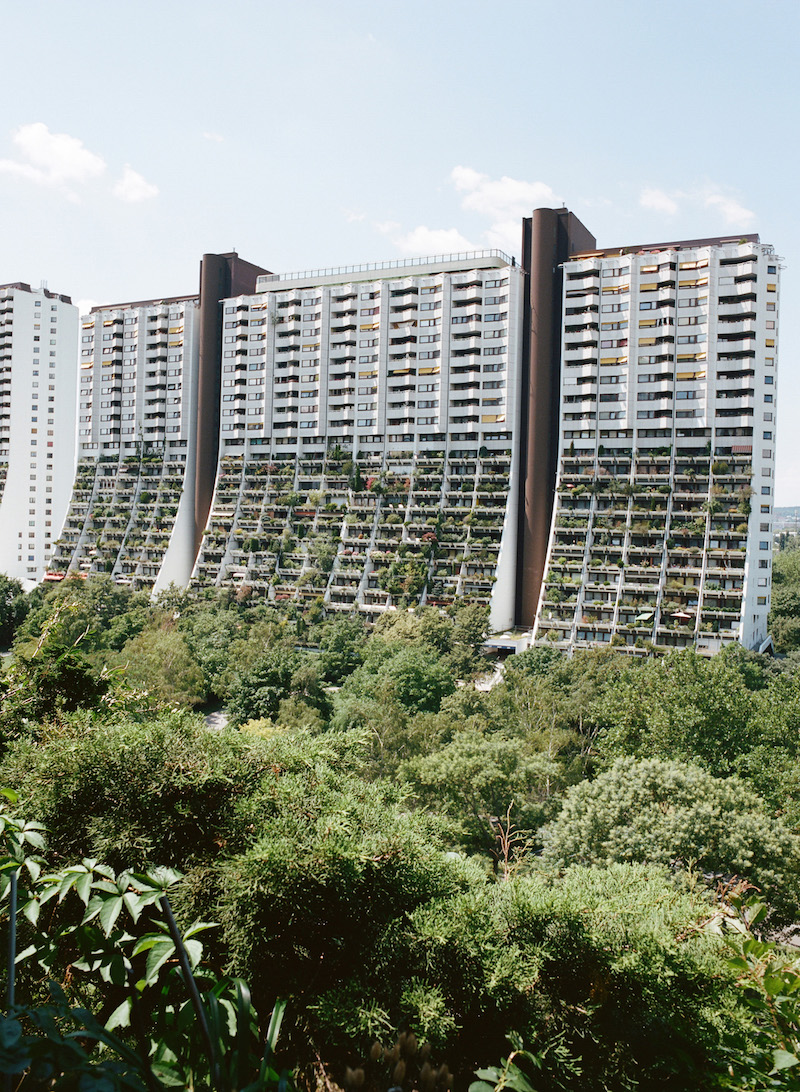
Zara Pfeifer: ‘Du, meine konkrete Utopie,’ 2013–2017 // Courtesy of the artist
Nadia Egan: Let’s talk about your project at Alt-Erlaa. I’d admittedly not heard much about this place before, but now I’m fascinated. What initially drew you to go there and document it?
Zara Pfeifer: At the time, I was studying architecture. I knew Alt-Erlaa from passing by with the U-Bahn. I’d heard all these stories, and I think when I started the project, there was a lot of prejudice surrounding it. We did a guided tour with the university, and visited one of the flats. We talked to one of the residents, which was really fascinating, as I got to hear how happy she was and how she couldn’t imagine living anywhere else. I also really liked the layout of the flat, so I knew I wanted to do a work on it. When doing my masters, I decided to do a follow-up series on Alt-Erlaa, which ended up being my graduating project. After I graduated, I continued working there for two more years. Although it was my first photography project, I later realized that it’s a general topic in my work, being drawn to these huge structures.
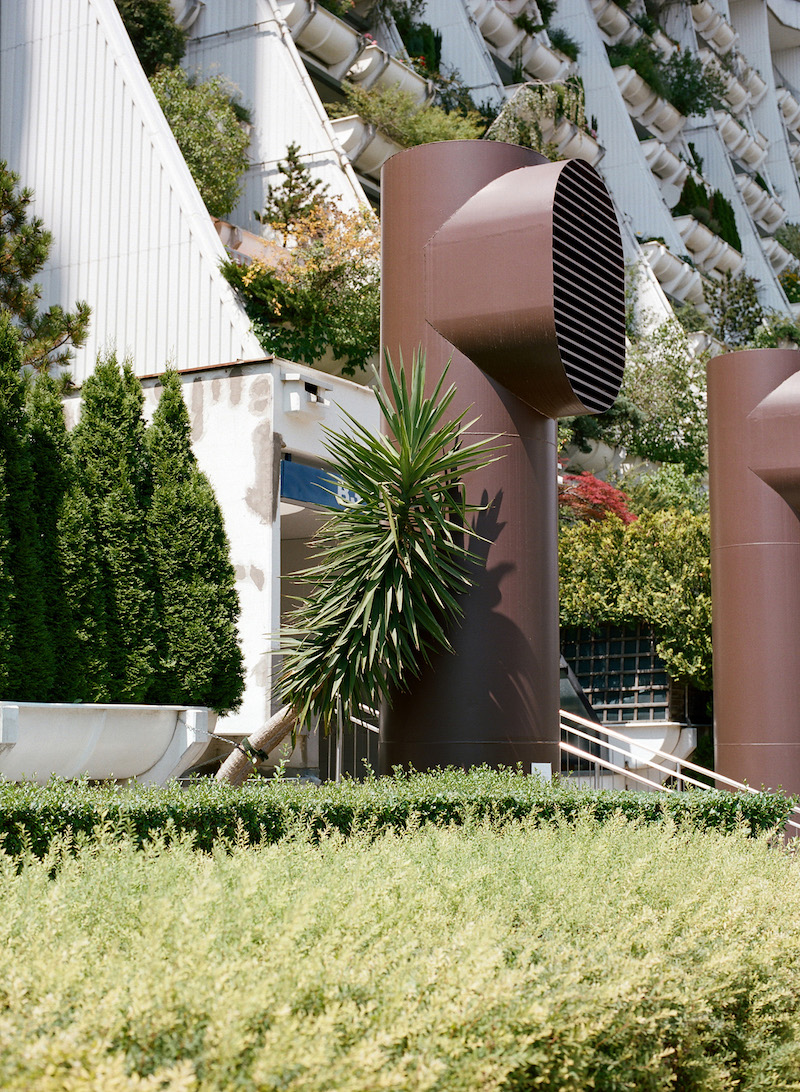
Zara Pfeifer: ‘Du, meine konkrete Utopie,’ 2013–2017 // Courtesy of the artist
NE: What can you say about the relationship between architecture—thinking specifically about Alt-Erlaa—and the communities living there?
ZP: This whole project went on for about four years, so I even interviewed the architect as he was still alive back then. He told me one concept was this proximity to greenery. Between the blocks you have a park, but every flat also has a balcony or terrace. There is also a proximity to water, and there’s the swimming pool on the rooftop that functions as a meeting point. The architect also talked about the importance of community spaces, even though he said it was unclear whether they would actually be used.
In the belly of the building, there were all these empty spaces that were given to the residents to do something with. Although lots of these spaces were for storage, through initiatives from the residents, clubs formed inside them. They were mostly organized in the beginning, during the 1970s and 80s, as the residents saw it as a great opportunity for them to get to know their neighbors, and I think it formed a pretty strong community back then.
It was fascinating because the architecture of these rooms is not something I would learn in architecture school. There’s no natural light, most spaces don’t have windows, there’s pretty low ceilings, the technical tubes are visible and it gets really hot in the summer, so it’s not a space you would necessarily learn how to design. But it’s still used so vividly, and so it makes you question what a good community space really is.

Zara Pfeifer: ‘Du, meine konkrete Utopie,’ 2013–2017 // Courtesy of the artist
NE: Do you think having these community spaces makes a big difference to the wellbeing of the residents?
ZP: Yeah, I think it definitely contributes to the identification with a space. When I talk to the elderly residents especially, it’s a great way for them to just stay in contact with others.
NE: You also did a project on some of the large housing blocks in Berlin. I’ve been to some of these and lived in a smaller version of one myself. From what you’ve told me about Alt-Erlaa, it sounds like there is a big difference between here and Vienna. Can you elaborate on that?
ZP: The Berlin series I did for an exhibition, for which the gallery invited an artist from Berlin to take a walk through Vienna, and an artist from Vienna (me) to take a walk through Berlin.
From my personal experience, I have the feeling that in Vienna, because of the long tradition of social housing and subsidized housing, there are these values that there should be functioning community spaces and that places should be maintained. I had the feeling in Berlin that it was much more rough, and the people I got to know didn’t identify so much with their building.
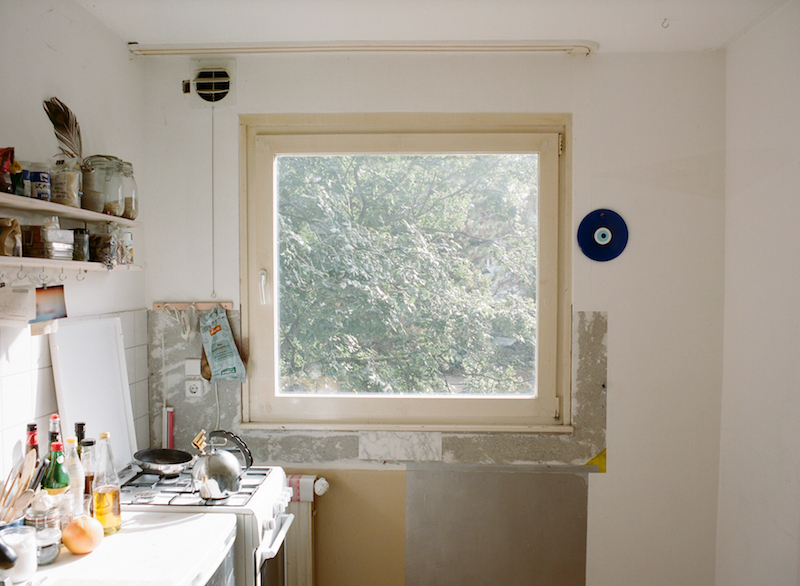
Zara Pfeifer: ‘Bonjour Tristesse,’ 2021 // Courtesy of the artist
NE: It’s a shame that hasn’t really carried through to Berlin. I want to ask, after getting so involved in your projects, and even living inside one of the buildings for a while, do you think this level of engagement influences your perspective on the place you’re documenting?
ZP: I really enjoy getting inside a new world that I previously only knew from the outside. I also have my truck series ‘Good Street!’, where I went with a truck driver for four days, even sleeping in the truck with them. But through taking part in that, I learned things more directly: like the rule that you should take off your shoes before you enter the truck’s cabin. It’s different from just making appointments and going to punctually meet someone and take photos. I think this is one of the most important parts of my photo series, this engagement.
I also like this moment of returning somewhere; it’s interesting to see the people that I get to know developing. In my experience, returning has always been something that deepened my relationship and understanding of a place. Also, to have some kind of break in between where you reflect, edit the work, then come back and see how families have changed and how flats have adapted to the changes. I’m already thinking about Alt-Erlaa, about returning in 10 years or so and seeing if the younger generation has adapted to the space.
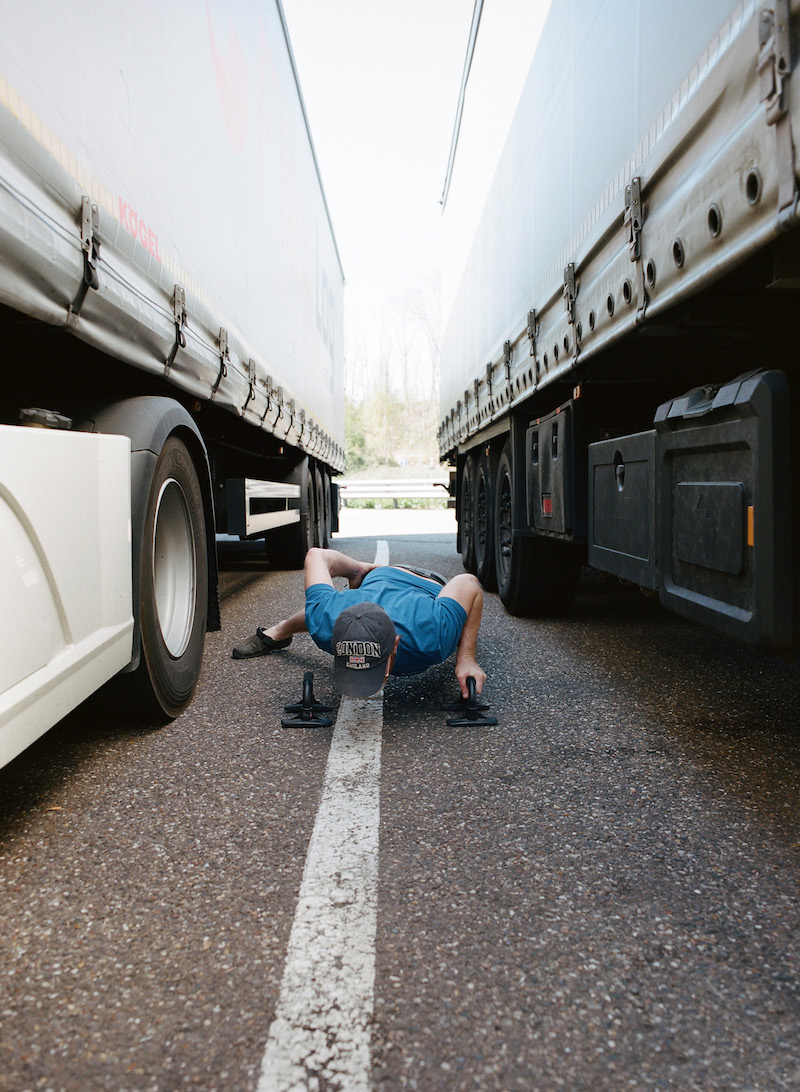
Zara Pfeifer: ‘Good Street!,’ 2018–2022 // Courtesy of the artist
NE: I think that’s one thing that’s really interesting about documenting a residential building. The likelihood is that it will stay there, but it will always change. I would like to talk some more about your project on the truck drivers. They’re in a completely different space, so how do you approach photographing them?
ZP: In Alt-Erlaa, I took my equipment, but there would often be moments where I didn’t take any photographs because I decided to just take part and be there for the evening. You change the whole atmosphere when you build up your equipment, and sometimes I didn’t want that. With the truck driver, I always had my camera. I had to be much faster because we were driving. When we had breaks of nine hours to be at a gas station, it was a different story. This was also when I got to know his colleagues and when I was able to walk around and find more situations to photograph. I don’t usually do classic portraits. Instead, I like these moments when you see the truck driver, for example, between two trucks doing his sit up routine in the morning. He goes there to have privacy and shade.
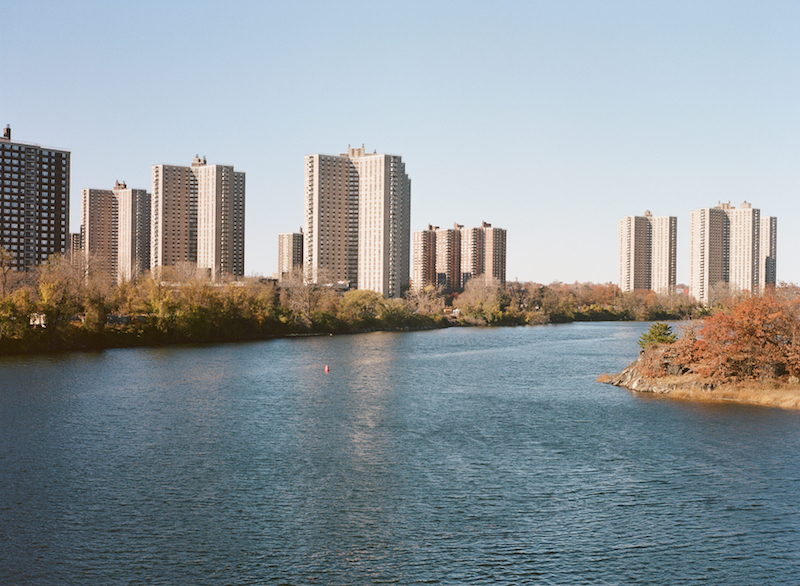
Zara Pfeifer: ‘Co–op City,’ 2023 // Courtesy of the artist
NE: You already spoke about returning to Alt-Erlaa, but are there any other buildings or spaces that you want to document in the future?
ZP: Well, right now I’m doing a residency at c/o Bardi in Florence, Italy and recently I was in New York for a three-month residency at ISCP New York. Here in Florence, I just started to research a very ancient soccer game that is still played, called Calcio Storico. It’s very violent, and in order to get the ball from one side to the other, you basically have to punch each other. It’s four teams for four areas in the city, and depending on where you are born, you have to play for that team. I’m interested in seeing how the players identify with their neighborhood.
In New York, there’s a housing development called Co-op City. It’s the biggest co-op in the US with around 50,000 residents. For now, my focus is on the power plant that produces the electricity and warm water. In terms of scale, I thought Alt-Erlaa was big, but this is just another thing. I’m planning to return this summer because I will do an interview with a Co-op City resident and an Alt-Erlaa resident. When I was talking to residents in Co-op City, it really reminded me of conversations I had in Alt-Erlaa. From what I heard, I had the feeling that they needed to defend the idea that it’s nice to live there. I also had that feeling in Alt-Erlaa. I guess it has to do with the prejudices they hear.
NE: I think you just assume, if you’re living in these massive blocks, that it’s not going to be a nice experience, but in reality that’s not always the case.
ZP: Exactly. From my experience documenting large scale housing blocks, it always depends on multiple factors: how the place is maintained, how the infrastructure is, what the community is like and how it’s connected to the city.




















